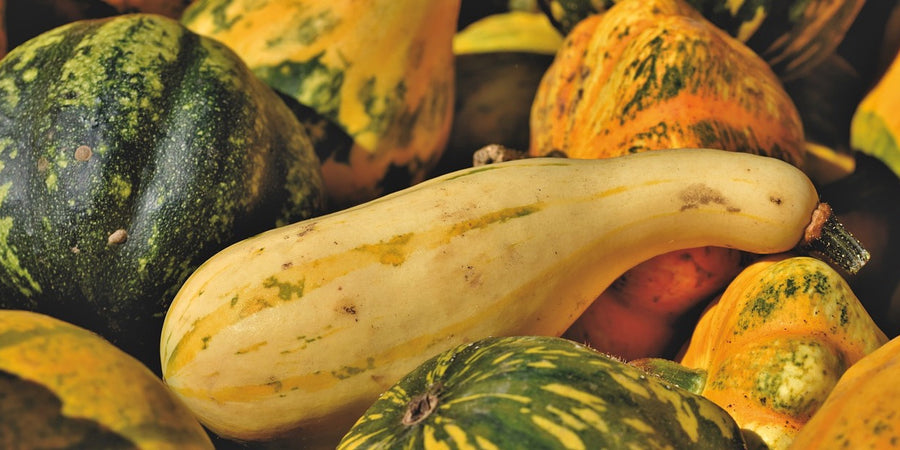May Monthly Growing Guide

Summer feels like it’s nearly here....well officially it does start on 1st May, Beltane, marks the start of Summer! It is traditionally a festival of fertility, the Earth has awakened from its winter slumber and is bursting with potent energy. It is a period rushing for life to grow and reproduce while the warmth from the sun is with us. The trees are bursting into leaf, many plants are flowering, and the weeds are growing like mad!
Let the planting out frenzy begin. But keep in mind Mr frost hasn’t left yet, have protective fleece and cloches at hand; for overnight conditions may suddenly strike.
May job list
Indoors:
Although seed sowing indoors is now to a minimal, make note of varieties that can be succession sown, especially Lettuce varieties, if slug pest is an issue. French and Runner Beans are ideal for sowing in the greenhouse or indoors this month, providing a far more predictable outcome and will provide a head-start on direct sown.
Brassica Tip: If sowing or transplanting brassicas into a multi-purpose compost, add a little garden lime to the compost. Put a layer of compost in the potting tray and dust it with enough lime to whiten it. Brassicas like a high pH (low acidity) and lime increases the pH of the compost.
Greenhouse/Coldframe:
All potted on Tomato and Tomatillo plants can be moved into the coldframe to start the process of hardening off. Indoor growing varieties of Cucumber will need support of netting tied to bamboo canes. Whereas growing tomato plants in greenhouses will require a more robust framework to support the plants when heavy with fruit.
Greenhouses will start to need some attention this month as the temperature starts to rise:
- Apply some form of shading - such as shade paint, netting, or blinds
- Open vents - if temperatures get into high 20s then plants can be damaged. Use a max-min thermometer to monitor daily highs
- Damp down - increase humidity by wetting hard surfaces with water. Do this a few times a day. Humid air also deters red spider mites
Over a 2 week period, coldframe lids should be kept wide open during the day and closed at night in order to climatise to outdoor growing conditions

Outdoors:
There is a lot to sow this month and with many crops they can be sown successional so that you get fresh harvests over an extended period such as Radish, Turnips, and Spinach.
Sow Sweetcorn directly outside after the last risk of frost has passed, remembering to position your seeds in blocks to maximise wind pollination.
Do not delay in thinning out direct sown varieties like Beetroot, Carrot and Parsnip varieties. Ground that was prepared and brought to a good tilth earlier in spring should be applied with a slow release organic fertiliser and planting out can begin. Brassica varieties of Cabbages and collards are some of the first to be planted out, and protection placed to deter slugs and bird pest.
Direct sowing of Turnip and Radish should be given protection against flea beetle too.
Some plants are more tender than others, and if you are planting the more vulnerable crops then please make sure you protect them well to avoid losing them to cold winds, cold soil or late frosts.
Which plants are most vulnerable?
• Tomato
• Aubergine
• Sweetcorn
• Peas & Beans
• Chilli & Pepper
• Courgette & Squash
• Cucumber
You don’t need to worry so much about brassicas, roots, salad leaves, leeks & onions as these are all hardier.
Keep earthing up soil around the first and second early varieties of potato plants and preparing the ground for main crop to join the early varieties.
Pest like black fly will be descending on young Broad Bean plants. Remove soft tips to minimise problem. Wash down with spray of water or use organic pesticide.
Remember...that Herbs can help to keep pests down in a natural way. Strong smelling herbs such as Chives and Lemon Balm can help to deter aphids, carrot fly, and mosquitoes,
Cane fruit such as raspberry should be applied with a potassium rich fertiliser. Weeding around all soft fruit shrubs and applied with mulch to boost growth and fruit production.
General tasks:
Look for all signs of pest attack on all susceptible plants. As the young plants are still establishing, water them in well, always aiming water spout to the base of the plant.
Annual weed will start to make an appearance. Keep on top of this job, to minimise weeds taking over the growing space.



